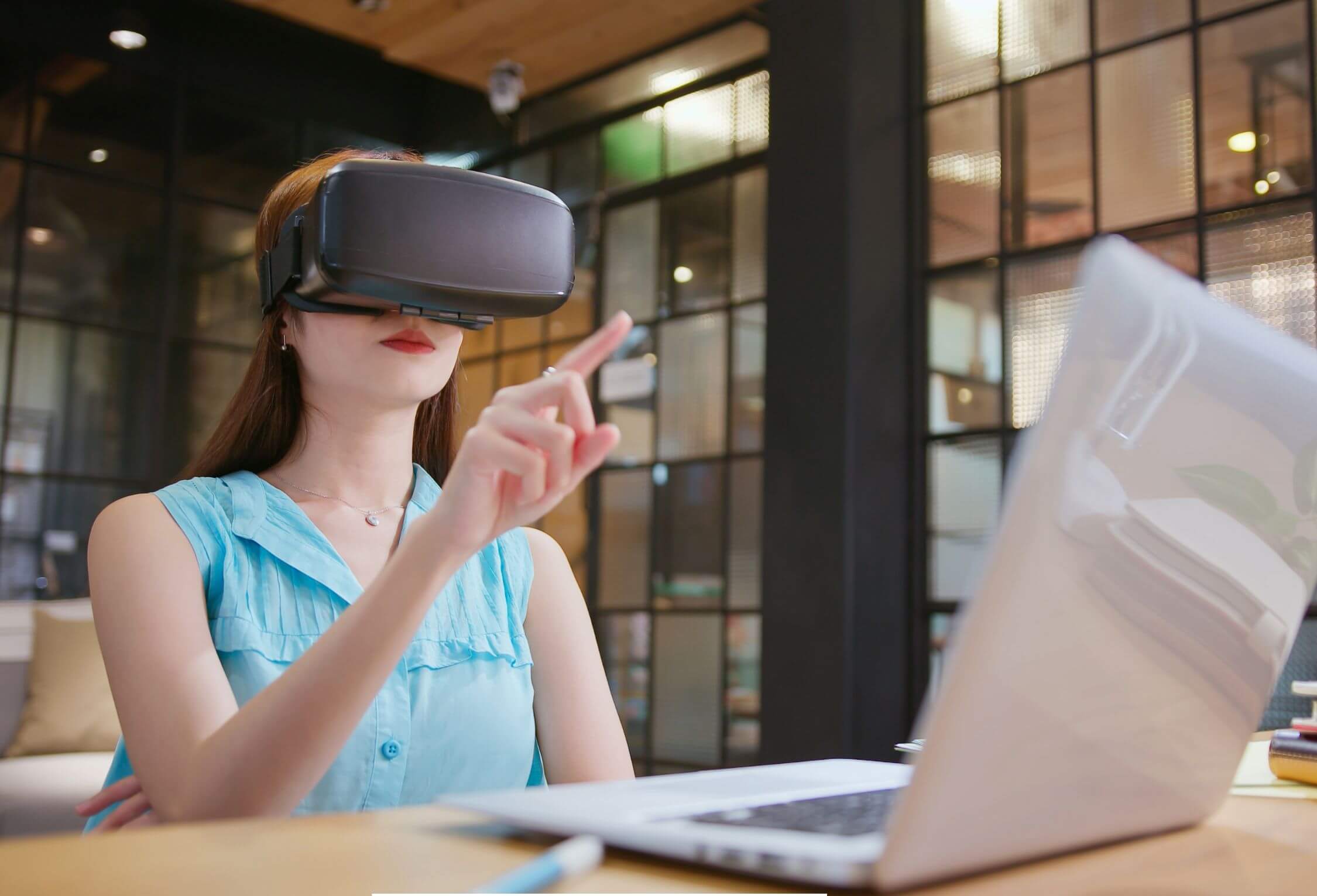Augmented Reality (AR) and Virtual Reality (VR) have moved from the realm of esoteric technology solutions to becoming tools that are instrumental in changing the ways organizations can function and interact with customers. As the overall AR and VR market is expected to rise with skyrocketing speed, they are revolutionizing the sphere of commerce for the better.
What Are AR and VR?
• Augmented Reality (AR): Complements real space by superimposing information from images, voice, and 3D objects on the physical context using gadgets like smart phones, augmented reality glasses, and tablets.
• Virtual Reality (VR): Trains users within a totally artificial environment, removing them from the real world through the use of VR helmets or similar tools.
Whereas with AR the objects are superimposed over existing environments, in VR, environments are completely artificial. Both are innovative technologies revolutionalizing conventional business strategies in different fields.
Applications of AR and VR in Business
1. Retail and E-commerce
Both AR and VR are revolutionizing the way shoppers ‘test’ products through ‘virtual trials.’
• Virtual Try-ons: IKEA and Sephora are two examples of the companies that implement AR for customer to see how a particular furniture would look in their houses or to apply makeup on them with the help of the application.
• Immersive Shopping: Since VR is an augmented reality solution, it can be adopted to allow consumer’s tours in virtual stores.
2. Training and Education
Organizations are adopting VR as it offers a safe, highly affordable and engaging form of training to any business establishment.
• Employee Training: It is a perfect tool for employee training in risky sectors such as construction, aviation, or healthcare – without having to risk lives and property.
• Skill Development: Applications enabled by AR also provide training by giving employees knowledge in a more engaging way. Both AR and VR are changing how properties in the modern world are presented and marketed.ng customers to “try before they buy.”
• Virtual Try-ons: Brands like IKEA and Sephora use AR to allow customers to visualize furniture in their homes or try on makeup virtually.
• Immersive Shopping: VR enables virtual store tours, where customers can browse products as if they were physically present.
2. Training and Education
Businesses are using VR to provide safe, cost-effective, and immersive training experiences.
• Employee Training: VR simulations help train employees in high-risk industries like construction, aviation, and healthcare without endangering lives or equipment.
• Skill Development: AR-powered applications offer interactive learning experiences, enhancing employee skillsets.
3. Real Estate
AR and VR are transforming how properties in the modern world are showcased and sold.
• Virtual Tours: Customers can analyze properties using virtual reality viewing without physically stepping into such locations.
• 3D Modeling: AR can be used to overlay images on the architectural designs and layouts as they are being made.
4. Healthcare
The healthcare industry in particular profits substantially from AR and VR in diagnostics or simulation and training or for treating patients.
• Surgical Simulations: It opens opportunities to train the surgeon in a risk-free environment in virtual reality.
• AR Diagnostics: AR can overlay patient information on patients during examinations to help doctors diagnose in real time.
5. Marketing and Advertising
AR and VR have proved to create innovation in engaging consumers and marketing brands.
• Interactive Campaigns: With the help of AR, customers are attracted by ads containing the approaches of games.
• Immersive Storytelling: While using Virtual Reality, brands are able to construct highly-impactful experiences for consumers.
6. Remote Work and Collaboration
With the globalization and development of technology, there are numerous remote work situations, and AR and VR give solutions for that.
• Virtual Workspaces: VR designs virtual offices for the purpose of encompassing teamwork.
• Interactive Presentations: AR improves video calls through 3D display and real-time annotations.
Benefits of AR and VR in Business
1. Enhanced Customer Engagement: Involving activities engage customer concern and keep their attention.
2. Cost Efficiency: Virtual training and tours invite minimization of expenses that are often incurred by the physical movement of people.
3. Increased Productivity: AR-assisted tools help to coordinate work processes and ensure higher effectiveness and quality.
4. Competitive Advantage: Companies that act earlier using AR and VR technologies can stand out in the markets that have become oversaturated.
Challenges and Considerations
Despite their potential, AR and VR come with challenges:
• High Initial Costs: Some of the hardware and development of AR and VR solutions can be costly.
• Technological Limitations: This has the effect that compatibility and performance are still challenges.
• User Adoption: Like with anything, training people, in this case – employees and customers, to use these technologies appropriately, takes work.
The Future of AR and VR in Business
Although AR and VR are still very developed technologies, their enhancement and easy implementation in business models will occur in the future. Emerging trends include:
• 5G Connectivity: Increased internet speed will improve effects of the augmented reality as well as virtual reality.
• AI Integration: AI will bring the essence of making these technologies intelligent and more tailored.
• Mass Adoption: AR and VR capabilities will aim to further demographics due to cheap devices and applications development.
Conclusion
Through adopting these technologies, the firms stand to reap the benefits of enhanced viable solutions, customer convenience, and being at the forefront within highly competitive markets. Across the sectors that range from retail to healthcare, from marketing to collaboration, AR and VR bring incredible untapped opportunities to drive new success in industries. Those businesses that use these tools today are creating the foundation for a more engaging, interactive, and integrated tomorrow.
Read Also: Mira Murati’s New AI Lab Attracts Former OpenAI Talent Amid Rising Competition



